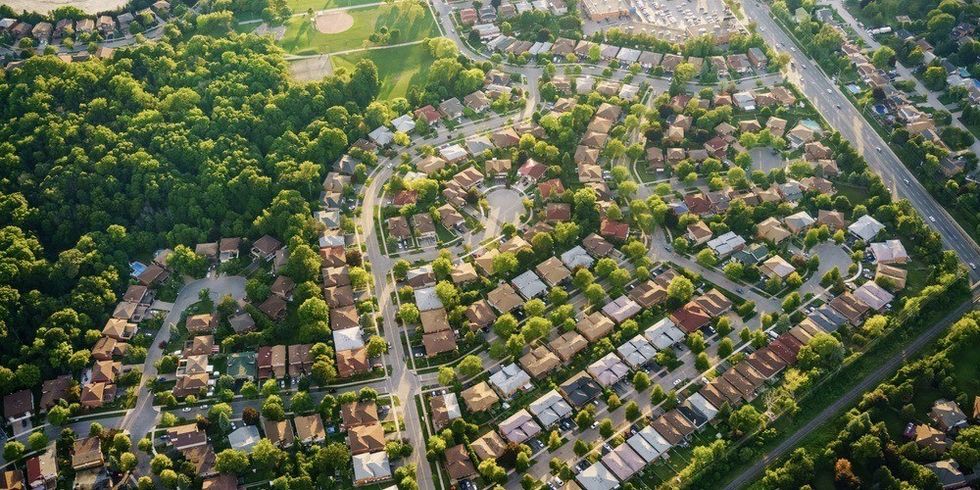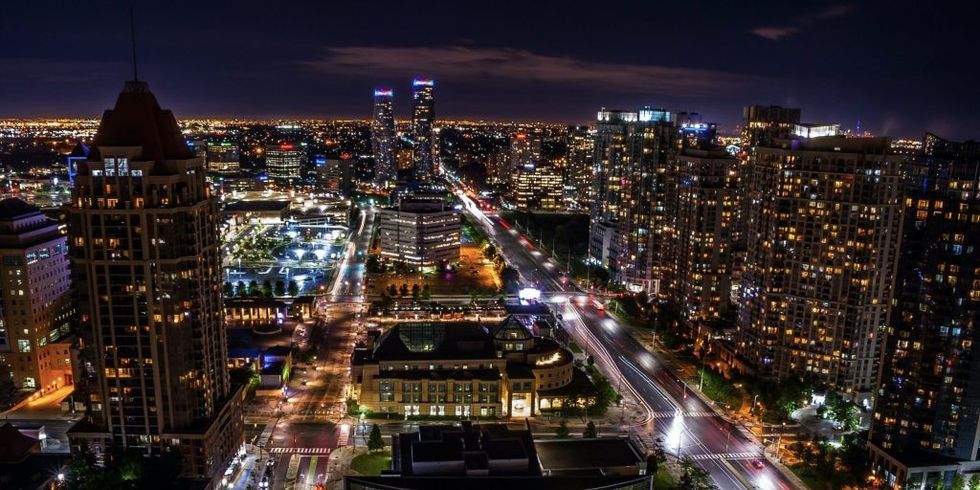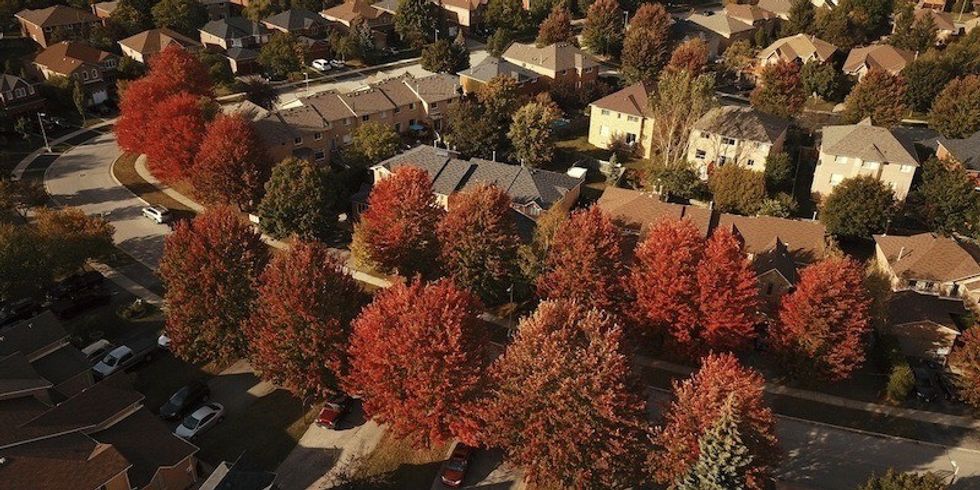The once-sleepy suburbs are now the hottest spots to call home.
All it took was a global pandemic, but Toronto’s suburbs are on fire on the real estate front, as they continue to smash records at jaw-dropping rates.
Of course, it’s not just suburbia; it’s been a wild ride for the single-family home real estate market throughout the Greater Toronto Area (GTA) since the onset of COVID-19 one year ago.
While the pandemic ravaged some industries, it became a catalyst for a red-hot real estate market – one that’s smashing records in terms of both sales and transactions.
READ: One COVID-Year Later: Everything That’s Happened in the GTA Single-Family Home Sector
But the suburbs are front and centre to this, as the need for more space became glaringly apparent and attention started to shift away from Toronto's confines to the (relatively) more affordable ‘905’ region – and beyond.
A Blissfully Unaware Winter 2019-20
As Toronto real estate became increasingly unattainable, the surrounding suburbs had become an increasingly attractive option for homebuyers even before a global pandemic became our reality.
As we bid 2019 farewell, real estate experts predicted a modest market with stable growth. Early in the year, January saw the highest monthly price gain in two years (8.7% year-over-year), leading the Toronto Regional Real Estate Board (TRREB) to declare that the hot GTA market would be a trend that would stick around.
What they couldn't predict was what would happen next on the real estate front as it took a worrying turn, or exactly how hot this market would then become... especially in suburbia.

A Spring to Adapt and Seek Space
Once COVID-19 hit the GTA, the real estate market quickly ground to a halt amid the chaos and confusion. This resulted in record-low transactions and worrying headlines. A report from Local Logic revealed a 35% decrease in online users reaching out to agents in just one month between March and April.
But – as the industry quickly adapted with new technology and virtual open houses – it didn’t take long to resurface with an unprecedented flurry of activity.
Inspired by a newfound need for more space to live and work – and, likely, more time to reflect and assess – the GTA real estate market shot back to life again once the warm weather hit in May. (Record-low mortgage rates from the Bank of Canada also didn’t hurt.)
Despite the early grips of the pandemic, the Region of Peel – which includes Brampton, Mississauga, and the Town of Caledon – still saw 927 homes sold in May, a 78% increase month-over-month. Around the same time, the average sale price in Oakville climbed 10% compared to the year prior.
A Sizzling Summer in Suburbia
The GTA real estate market began to break records and make headlines as the (highly unusual) summer sizzled on. July to November saw a double-digit year-over-year increase in GTA home sales – including a high of 42.3% in September.
Figures released from TRREB in September revealed a sales growth in the 905 areas (near Toronto) that was higher than in the city’s 416 centre.
While places like Peel, York, and Durham regions remained popular spots for house-hunters, a little further out from the core, Hamilton’s real estate market was also hotter than ever as the pandemic raged on throughout the summer. A fall outlook from RE/MAX suggested that the Hamilton-Burlington housing market made a strong comeback after a decline in activity at the onset of COVID-19.
READ: One COVID-Year Later: Everything That’s Happened in Toronto’s Condo Sector
Notably, the resale market in the ‘905’ region broke sales records in August, with buyers showing “a higher preference for ground-related housing,” according to research from Ryerson University’s Centre for Urban Research.
But the condo market in suburbia was also remaining relatively strong as summer went on, as opposed to that of the downtown core.
According to Urbanation’s Q3-2020 Condominium Market Survey, the total number of new condominium apartment sales in the GTA increased 30% year-over-year in Q3 (July, August, and September) to 6,370 units, reaching a record high for third-quarter activity. This growth in activity was primarily in the 905-region, where sales grew 106% from a year ago to 3,834 units, while sales in the City of Toronto declined 16% to 2,536 units.
September was a particularly dramatic month for '905' real estate, outperforming the '416' in terms of both number of new listings and sales.

Closing Out the Year on a High Note in the ‘905’
“It is insanely busy in the suburban real estate market,” said Asha Singh, President of the Mississauga Real Estate Board (MREB), back in November.
“Any property coming to the market now in Mississauga, Brampton, or Oakville, for example, is guaranteed to have multiple offers. Any new development in Port Credit or in Lakeview is getting sold right away. We don’t have enough work sheets to be filled out for these condo sales.”
According to an analysis of Durham and Halton regions by John Pasalis of Toronto real estate brokerage Realosophy, prices for detached, semi-detached and row houses had seen year-over-year price increases of around 20 per cent.
We’re experiencing a real estate market driven largely by the millennials, Diana Petramala of Ryerson University’s Centre for Urban Research told STOREYS back in November. With a desire and newfound need for more space to accommodate home offices and growing families, this demographic is opting to trade their shiny shoeboxes in the sky (see: Toronto condos under 600 sq ft) for homes in suburbia and smaller cities. Though millennial-centric, the exodus from the city, however, is evident across all generations, said Petramala.
Proving further that it’s not just single-family home seekers in suburbia, for the first time ever, new condo sales in the ‘905’ region outpaced those in the ‘416’ region in 2020. The former represented more than half (51%) of new condo sales for the year, after 9,288 units were sold.

A New Year, Same Suburban Sizzle
As we entered the New Year, the suburban real estate market continued to sizzle, resulting in intense competition and bidding wars that drove up prices to eyebrow-raising amounts. When it comes down to it, in today’s climate, suburban home seekers are prepared to dish out more dollars due to a fear of missing out.
“By any definition, prices are up +30% since last year and the average home is up 16% since November in the suburbs,” says Pasalis of the current climate. “When we think about bubbles, one of the key drivers is a rapid acceleration of housing prices – and they don’t normally appreciate 16% in two months. A lot of this is driven by exuberance in the housing market, leading to bubble-like symptoms in suburbia.”
February, then, was a telling month. According to TRREB, 10,970 homes changed hands in February — a 52.5% increase compared to 7,193 sales reported in February 2020 — which was fuelled by 4,943 detached home sales in the 905-area. The same month, the average selling price for all GTA home types had hit $1,045,488, with detached, semi-detached, and townhouse market segments in suburban areas the drivers of average price growth. In all three cases, the annual rate of increase was above 20%.
Looking Forward
While experts generally agree that it’s unlikely we’ll see a bubble and subsequent burst in the GTA housing market, some, like Pasalis, say that if there is going to be a bubble, it’s going to be in suburbia. However, he predicts the buying frenzy and dramatic bidding wars won’t last.
“What we’re starting to see now is that is slowing down,” he recently told STOREYS. “People are paying closer to what the comparable sales may be – which are still significantly higher than they were three months ago – but they’re not pushing them up rapidly. We’ll probably see prices stabilize in the months ahead.”
While the suburbs will remain coveted spots to call home – especially now that they’re offering more than big box stores and chain restaurants – the trend of trading city living for suburban space is unlikely to last, say experts.
While it may not seem so at the moment, Toronto will return to life again, complete with the countless perks of living within its borders.
As for the ones who were planning to move anyway, they’ll likely not return to the city lights. While the onset of the pandemic may have acted as a final catalyst, the suburban seed was planted long before then. “My basis is that households who fled the city were likely going to flee anyway, the pandemic just sped it up,” says Petramala.





















